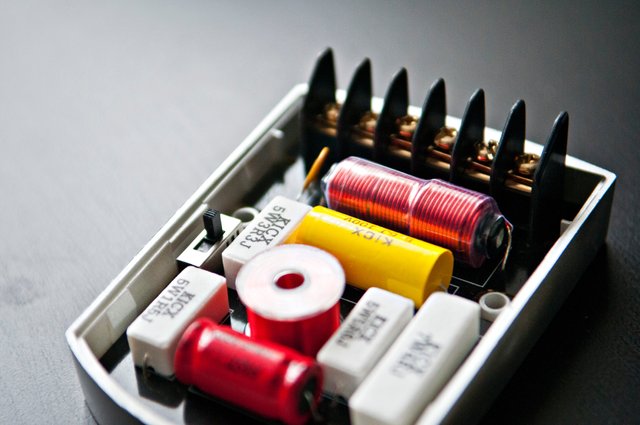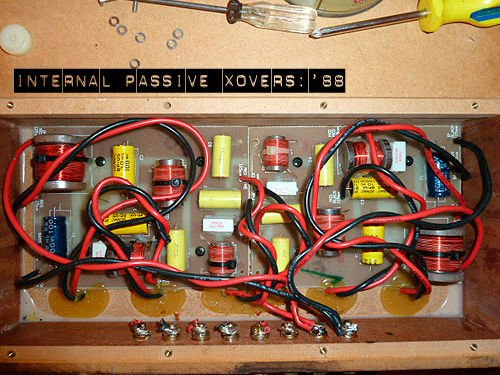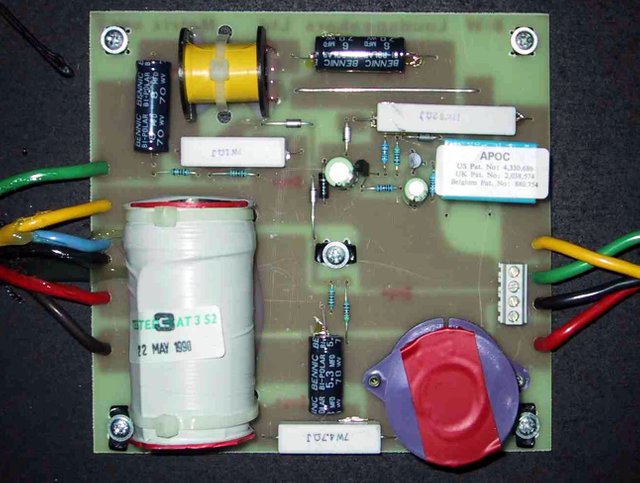Technology and sound----------(The audio crossover)
CROSSOVERS
Ever seen a sound engineer doing his thing, and you’re wondering how they understand the whole thing? With so many cables, each with two ends, and having a specific port it's supposed to go in, and you are amazed at how they can easily disassemble and reassemble those connections that looks like a puzzle when it's not connected? I guess you have.
I’m also sure that the working principle of equipment such as EQ, Limiter, compressors and even the crossover networks have left you speechless sometimes. You might not even be on the clear on how to tell each one apart, talkless of knowing how they work. In my previous post, I discussed EQ, Limiter, Compressors. In this article, I am going to be concentrating only on the crossovers, and I will try a bit to explain the working principle.
The importance of Crossovers can't be overstated. Do you know that it is impossible for most individual speaker drivers to cover the entire audio spectrum from the low frequency to the high frequency with acceptable relative volume and absence of distortion without the audio crossovers?. All right, let's get to know what a crossover is.

CROSSOVERS
Crossovers are electronic filters used in audio application to split the audio signal into a separate frequency band that can be separately routed to a loudspeaker optimized from those bands. What this means is that the crossover splits the audio signal it receives into a separate band, (just like the tally system), then, it guides this bands one by one so that they could be processed individually, finally, after being processed, they are mixed together again.
TYPES OF CROSSOVER:-
They are two basic forms of crossovers, these two types are;
The passive crossover
The active crossovers.
PASSIVE CROSSOVER:-
These are crossovers designed to operate at power amplifier’s output level and are often integrated into the design of the speaker cabinet. What this means is that these types of crossovers are incapable of producing energy on their own. They rely on the power produced by the power amplifier to be operational and are built into the speaker system.
High-pass, low-pass and band-pass filters divide the frequency spectrum from delivery to the target components.
Passive crossovers don’t require electrical power to operate as they are merely circuits that filter out specified frequency bands.
In order to withstand the sheer energy of a modern high wattage amplifier, the passive crossover circuiting must be substantial.
N/B: Passive crossover’s electronic components will usually heat up, just as electronic circuits heat up and can lead to a change in their response characteristics, causing them to produce an inaccurate sound.

ACTIVE CROSSOVER:
These crossovers receive a line-level signal (a standardized signal level for transferring analog audio between device), either from the mixer or in-line processor and also require electrical current to operate.
The filter included in an active crossover is adjustable and accurate, which helps the designer to adjust the size and strength of each band. The point where one band transitions to the next are called the crossover point. This simply means that the crossover point is a point where you get the equal intensity of sound coming out of both speakers.
N/B: Crossover system comprised of custom-built or specifically selected components in other to realize the full system potential.
Active crossover provides ample control over the band selection and distribution. This is because the active crossover splits the frequency spectrum into multiple bands which require at least one power amplifier to operate it’s target cabinet or components.

Ordinarily, to produce high levels of high-quality full range sound, an active crossover and multiple power amplifiers are required. Systems can be designed such that an active crossover can handle every crossover point or some of them.
In a high output system, passive crossovers are generally most useful in transition into the high frequency, horn or super tweeter. In this case, the active crossover would be used for the low-to-midrange or low-to-lower-mid crossover point.
A crossover unit involves two or more filters, which determine the frequency range to be reproduced by each speaker component. Each crossover point involves both low-pass and high-pass network which work together to confine to a particular range the signal sent to each output.
N/B: The idea of a crossover band which stops at a particular frequency, and simply don’t allow anything beyond the frequency to pass, is often referred to as a brick wall filter.
Audio engineers over the years have had a chuckle over the notion of the brick wall filter, as it is a theoretical ideal unachievable in the real world, though some modern circuit has come amazingly close.

How it works
The basic function of the crossover is to send the high-frequency information to the tweeter and eliminate the same band of high frequencies from the woofer. This is to say that the crossover use filtering to ensure that the speaker drivers only receive the audio signals that they are designed to handle.
A crossover consists of two frequency filter sections connected in parallel, these two filter sections are;
The high pass section
The low pass section.
The high pass sections feed the tweeter and can only allow high frequencies through. This simply means that this filter section will only allow high-frequency signal (frequency above 2 kHz) through to feed the tweeter.
The low pass sections control both mid-range and the woofers and will only allow the low frequencies through(frequency below 2 KHz).
The high pass filters are connected in series with the tweeter likewise the low pass filters which are also in series with the mid-range and woofers.
N/B: These the two sections (high-pass and low-pass) will only work properly when connected in parallel if the woofer and tweeter are both attached and operational.

Importance of the audio crossover.
Like the human brain, the crossover network is a director. and in addition to its primary function, the passive crossover in practice is expected to do more than simply split the frequency band in two.
With the crossover, it is possible to place two 8 ohm speakers in parallel, with one for the high frequencies and the other for the lows frequency, and still present an 8 ohm, not a 4-ohm load to the amplifier.
The crossover also makes possible for two drive units of different efficiencies to be matched in order to prevent a large shelf in the frequency response as a result of combining the two drive unit directly.
With the crossover, it is possible to equalize the frequency response of either the woofer or tweeter, making the composite response smoother than the unfiltered curves of either driver (woofer or tweeter) would seem to indicate is possible.

Conclusion:
crossovers are mainly electronic filters used in audio application to split audio signals. Crossovers use filtering to ensure that the speaker drivers only receive the audio signals that they are designed to handle.
The passive and the actives crossover are the two basic types of audio crossovers. The crossover work just like the human brain in a speaker system.
Reference
Crossover basics
Crossover and why it is important
About audio crossover



Hi @jamesub!
Your post was upvoted by utopian.io in cooperation with steemstem - supporting knowledge, innovation and technological advancement on the Steem Blockchain.
Contribute to Open Source with utopian.io
Learn how to contribute on our website and join the new open source economy.
Want to chat? Join the Utopian Community on Discord https://discord.gg/h52nFrV
I think I can relate to this!
Interesting write @jamesub
Thanks, @gidionline